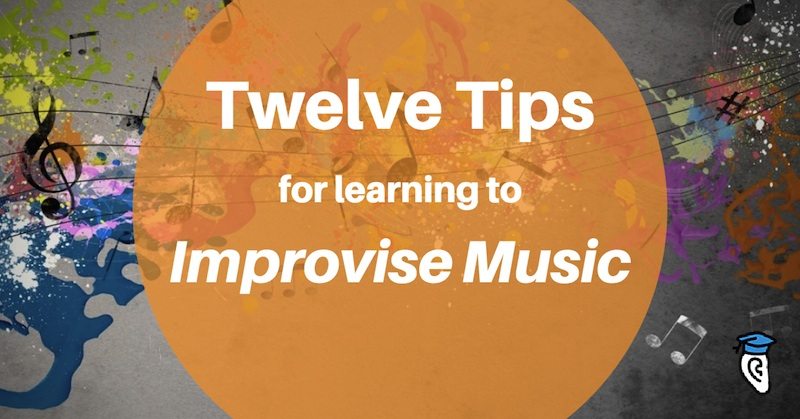To become a great improviser you need to unleash your inner musical instinct and then learn to control it. Learning to improvise is a long-term mission, one which will push you to your musical limits and then beyond. You’ll need to be armed with some tips, tricks and strategies to help ensure you continually improve.
Although the details of how to improvise vary by instrument there are some tips and strategies you can apply no matter what instrument or style of music you play. You can see our previous guides to improvising on guitar, saxophone and piano for specific guidance on those instruments, and on rock and jazz for how to improvise in those styles. In this article we’ll share some universal tips for developing your skills as an improvising musician.
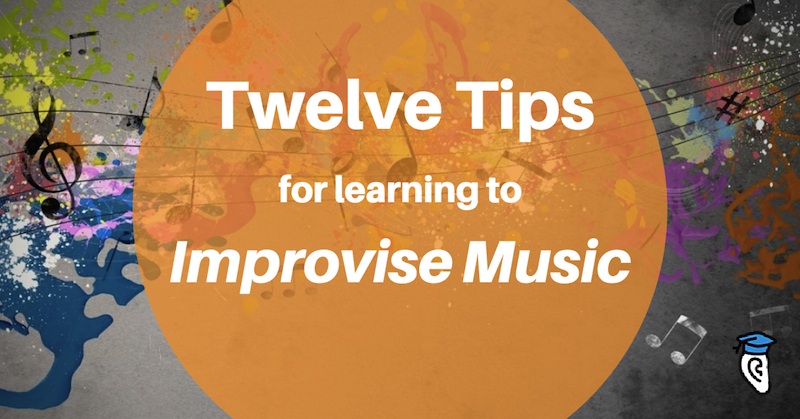
Know the basics
Before you can make use of tactical advice, you need to have covered the basics. There’s no point learning shortcuts and accelerators if you haven’t even started on your improvisational journey!
Begin with learning the basics of improvisation and 6 simple steps to begin improvising music.
Along with the basics of improvisation you will want to learn some basic music theory to help you know what your options are and how notes, chords and rhythms work together to create great-sounding music.
Got the basic knowledge covered? Great! Then we can start looking at some specific tips to help you improve.
Get Your Head Right
Improvisation success depends on your attitude. Before getting caught up in the details of learning to improvise, make sure you’re going in with the right philosophy about it. That doesn’t need to be sophisticated at all, it’s just having a clear answer to the question:
What does improvising music mean to you?
- Does it mean freedom, creative expression, fun exhilaration and a new route to musical confidence?
- Or does it mean danger, showing off, or a highly-advanced skill you only hope to some day obtain?
You can probably see which of these attitudes is going to lead to more improvisation success!
At its core, improvisation is about enjoying making music. It’s perhaps the purest form of musical expression and there’s a real beauty and elegance to the natural creativity it channels.

As you begin, and later whenever the task of learning to improvise seems to be too complicated or too challenging, return to this core philosophy: improvisation is about fun and freedom, about the pure enjoyment of music for music’s sake. Keep that in mind and you can’t go wrong.
Fundamentals, fundamentals, fundamentals
It’s easy to get carried away when learning to improvise, trying to integrate all sorts of advanced ideas and frameworks. But ask any of the most famous jazz musicians and they’d tell you the same thing: you need to know the fundamentals. Two of the most famous sports coaches of all time, Vince Lombardi and John Wooden, would tell you the same thing: it’s all about fundamentals.
For improvisation to sound musical it needs to be based on the notes of the key you’re playing in. Otherwise you’ll just produce a jumble of discordant random-sounding pitches. To play notes from the key means knowing the scale, and to play in any key that means knowing how to play major and minor scales in all 12 keys. Ideally the melodic and harmonic minor, as these will serve different purposes for you in your improvisation.
It also means knowing the chords of the key, so that you can play suitable notes over a progression in that key. Even if you don’t play chords on your instrument you can benefit from learning about the chords. For example, think in terms of arpeggios if you play a “melody instrument” like sax or trumpet.
All of these fundamentals may seem like a lot of theory and tedious exercises to practice, but these are the bedrock of all good improvisation. The frameworks they provide let you play freely and confidently, knowing that the notes you choose will sound good and the solos you create will sound musical.
Respect the fundamentals, and put in the time it takes to learn them. Up-and-down, forwards and backwards, and inside-out.
Embrace your Mistakes
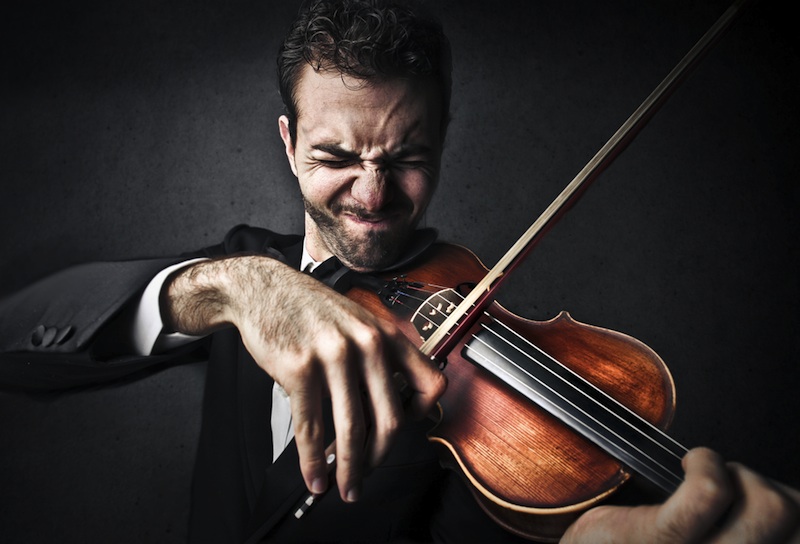
Many people get discouraged when learning the art of improvisation because they try for perfection – when that is perhaps the exact opposite of the true spirit of improvisation!
Improvising music isn’t about avoiding mistakes – it’s about risking them and recovering from them.
If you always stay perfectly within the audience’s expectations and the “rules” of music then your improvisations will be dull and predictable. You need to push the boundaries and be willing to risk trying things that might not work out.
What saves this from producing a mess of “wrong” notes is that you should also learn to recover from mistakes.
Play a whole string of bad-sounding notes and your improvisation is, by all accounts, a failure.
But play a single bad-sounding note, and you have a whole range of possible ways to recover from that “mistake” and make it musical. Those momentary clashes of discord that shake the audience out of their slumber can actually become your solo’s greatest power, if you learn to skilfully turn your phrase in a direction that makes that “wrong” note “right”.
Strong knowledge of theory and the possibilities available to you can make it easier to make those recoveries, but really this is a skill you learn by doing. When you’re practising improvisation, push yourself every time. Suspend your natural judgement and high expectations of yourself. Take risks and go beyond your comfort zone. When you make a mistake don’t stop playing! And don’t berate yourself. See it as an opportunity to practice a more important skill than perfectionism: recovering from mistakes.
The more times you’ve made a mistake and recovered from it in practice the less scary the idea of making a mistake in a real improvised performance will be. Your improvisation will improve far faster and become far more interesting if you learn to embrace your mistakes.
Mind or Voice before Instrument
Using frameworks like a scale or fingering pattern can be great, but improvisational constraints need to be applied thoughtfully. Otherwise you wind up improvising robotically, just moving your fingers to produce notes according to rules, without really having a clue before the notes are played what they will sound like.
The ideal is to play the notes you mean to play because you’ve heard them in your head already, even if only a split-second before playing them on your instrument.
The way to reach this ideal is to practice audiation and learn to sing to express your musical ideas.
JazzHeaven.com How to Play Jazz Lesson with Lee Konitz
Lee Konitz and Dan Tepfer demonstrate playing back and developing an improvised sung melody on your instrument.
Matt Raines Guitars Jazz Guitar Lesson – Scatting Singing and Playing Improvisation
Matt explains how he’d play a very different solo which flowed much better if he was trying to sing along rather than just relying on fretboard patterns.
Playing By Ear with Brad Mavin: I-IV-V-vi Practice Exercises
Brad shows a way to use sing-along exercises to internalise the sounds of common chord progressions and improvise arrangements and solos for them.
Record Yourself AND then Listen and Learn
This has been covered several times in previous articles but it’s so important that it’s worth repeating.
If you really want to improve fast in improvisation, don’t just play one-off improvised solos and forget about them. Instead, record them and take the time to listen back.
Force yourself to really listen objectively and carefully to what you played. Evaluate it and see which parts worked well and which didn’t, and ask yourself why. Better yet, ask a friend or a teacher. Then take note of what you can learn from that to bring into your next improvisation.
This simple habit of recording and reviewing each improvisation can transform your practice sessions from small, slow steps forward into intensely transformative masterclasses that dramatically accelerate the progress you make as an improviser. It may sound like I’m overstating it here, but I’m not. It takes guts and patience to actually do it but it really does make a world of difference to the results you get.
Take it from Steve Nixon at freejazzlessons.com:
Recording myself daily! I truly believe that this simple habit is the #1 reason why I’m a professional musician today.
Take it Slow (Literally)
When you have technical skill on your instrument it’s all too tempting to jump into improvising at your full normal playing speed. However, whenever you’re at the limits of your improvisation skill your brain needs time to actually think through what you’re trying to play! In future this need to actively think things through will diminish, and you can play more complex solos while thinking less. But at least at the beginning you need to be able to accept that your improvisational playing speed will be substantially slower (think 50%) than your regular playing speed.
To teach your brain and ear the improvisational skills you’re aiming for, it’s important not to overwhelm them. And there’s no better way to cause overwhelm than to rush, rush, rush! Instead, take your time. Slow down to speed up. Set your metronome for half speed. Not so slow that it becomes hard to produce clear musical phrases, but certainly slow enough that you feel you have time to make the decisions you need to about what to play next.
As your improvisation skills improve you can gradually increase the tempo and/or complexity of what you play until it is just as fast and complicated as the most ambitious sheet music you’ve tackled.
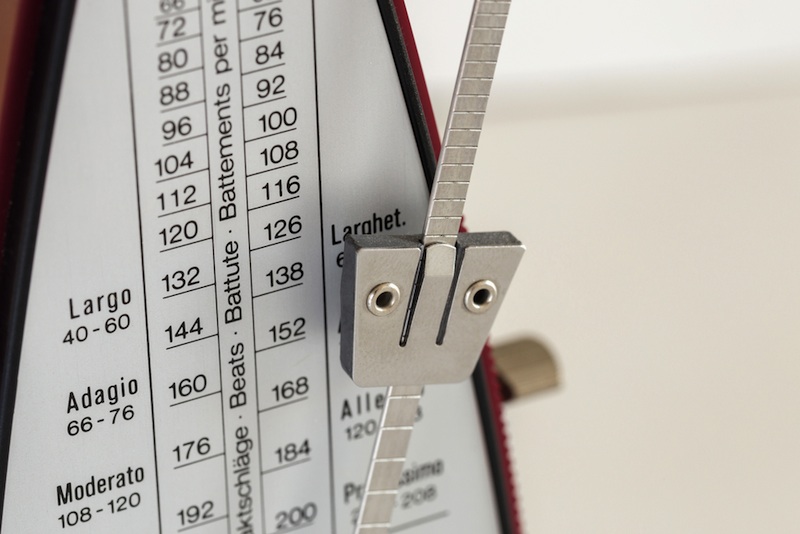
Take it Slow (Figuratively)
Be patient with yourself. Like all aspects of learning music, learning to improvise will take time. Don’t expect yourself to have a natural “gift” to effortlessly let fly a flurry of musical perfection! Great improvisers have worked hard to become so “gifted”.
Take your time and enjoy the journey. As long as you are improving and enjoying the process, that’s all that truly matters. If you’re taking the advice to record yourself it will be easy to look back in a month or two, or even a year or two, and hear clearly just how much your improvisation skills have advanced.
Play Improvisation Games
A great way to free yourself up in improvisation and keep pushing your limits while having fun is to play musical improvisation games with friends. Many music teachers have a collection of favourites, ranging from very simple “call and response” between two players, to more sophisticated harmonisation and rhythm-based challenges.
You can buy books of music improv games and even get a card game which helps to inspire you with new improvisation ideas.
You can even take things a step further – here’s a fantastic list of games from Open Your Mouth and Sing which combine music, singing and improvisational sketch comedy.
Remember the goal isn’t to produce incredible polished music renditions – it’s to free up your musical instinct, shake off those inhibitions and let your musicality shine through.
Start with a Seed
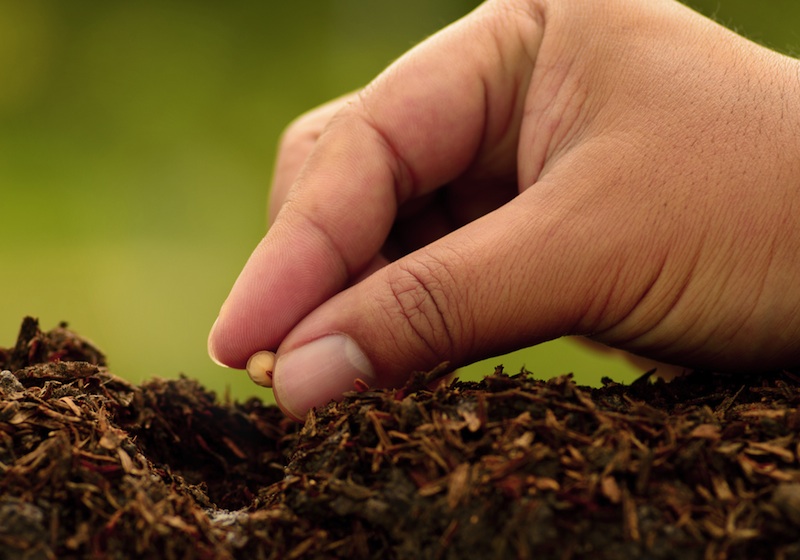
Improvising 100% “out of nowhere” is tough. With nothing to start from, the possibilities are too endless to handle.
Take a tip from Improvisational Freedom Through Constraints and give yourself a helping hand: a starting point, which helps narrow down the choices for where to go next.
As your starting point you can pick a handful of notes from a scale, the beginning of a well-known melody, or simply borrow the rhythm, pitches or chords from a piece you know, and change each of the other aspects. What you produce will sound original and you can branch out from there into more “pure” improvisation.
Don’t expect yourself to conjure a masterpiece from nothing: start with a seed.
Share It
There’s a lot to be said for “woodshedding”, the tradition of practising improvisation alone for hours on end. But music is fundamentally a social art form and all that practice should be working towards the goal of sharing your new musical creativity with other people.
You can share with other musicians by collaborating in a band or jam session. That can sound scary if you’ve never done it before, so make it easy on yourself to start out: just get together with a friend and trade licks back and forth. Try some call-and-response improvisation games. Play duets and give each other the chance to improvise a solo in the middle.
When you get braver, step out and improvise for an audience. If you’ve been recording yourself and learning to risk and recover from mistakes, this shouldn’t be too scary! At this point you know you can improvise well, so step out there and show what you’ve got.
Be Bold and Keep Improving
If there was a single tip to summarise all the advice in this article and our others on improvisation ear training it would be: be bold and keep improving.
Being bold means having the guts to start improvising in the first place, to keep pushing your boundaries, to risk mistakes, to be brave enough to record yourself and listen back, and to go out there and improvise with other people and for an audience.
To keep improving means never being satisfied with using the same old patterns in your improvising, not simply “improvising by numbers” according to music theory rules alone, it means pushing your boundaries and going beyond your comfort zone each and every time you pick up your instrument to play a solo, and continually challenging yourself to be better this time than the last.
Improvisation is not an advanced skill or a magical “gift”, it is a learnable skill – and if you learn it in the right way it’s the most fun musical skill you can spend time practising! Use the tips above and the extra resources I’ve linked to ensure you never run out of ideas and strategies to become a better and more confident improviser day by day.

